How to reclaim flyovers as people-centric ‘green’ infrastructure

Since the construction of Dhaka's first flyover in Mohakhali in 2004, a variety of elevated vehicular infrastructures have been built in the capital city to ease its paralysing traffic congestion. The total length of this vast network of elevated structures spread across the capital is 105 km (to put in context, the distance between Dhaka and Chattogram is 220 km). While these single-use (only vehicular movement on top) infrastructures facilitate motorised mobility above ground from one point to another, they create considerable residual spaces below along dense urban corridors. Totalling about 207 acres across Dhaka, these labyrinthine and dark spaces are used, misused, abused, and unused, all in a bewildering range of ways.
Improvised and informal uses of these flyover residual spaces include, among others, police box, squatters for the poor, car parking, public transportation waiting area, food kiosk, storage space, garbage collection, wet market, nighttime fish-cutting zone, prayer space, hawkers' market, and street children playfield. These spaces are also unaccountable sites of laissez-faire use by a wide variety of informal market actors. Drug use and peddling are not uncommon, creating concerns for public safety.
Characterised by a culture of ad hocism, these valuable urban lands below elevated road infrastructures rarely reach their full potential. Neither the city administration nor the companies that built them consider their usefulness during the design phase. There is no government policy to optimise them for the greater good of the city. A casual stroll around the Moghbazar-Malibagh Flyover and the Mayor Mohammad Hanif Flyover will provoke myriad questions: why in a hyper-dense city like Dhaka are we creating infrastructures that waste urban land? Why can't we create infrastructures that serve many purposes – vehicles on top and urban communities underneath? How do we humanise the cold concrete serpent that is the flyover?
This is surely a missed opportunity.
Funded by the United Nations Development Programme (UNDP), the Centre for Inclusive Architecture and Urbanism (Ci+AU) at Brac University recently carried out a research project to (a) estimate the aggregate socioeconomic and public-health costs of not properly utilising the residual spaces below Dhaka's flyovers, and (b) recommended policies to transform this urban "waste" into an opportunity.
Our researchers calculated that the total annual loss due to the use, unuse, and misuse of flyover spaces in Dhaka is over $2 billion or a staggering Tk 21,000 crore. Half the Padma Bridge could be built with this lost money every year.
This is a prodigal waste, particularly for Bangladesh, one of the world's most populous and land-scarce countries. Can a dense city like Dhaka – with a population density of over 23,234 people per sq-km (as of December 2022) – afford to squander away such valuable urban land this way?
The question is tricky though. We are not saying that these spaces should be gentrified to make the city look beautiful and sanitised for a minority middle-class use at the expense of a vast majority of city people eking out a minimal existence in this difficult city. Based on our research findings, we propose that local land use, local community aspirations, public health strategies, and innovative transportation engineering should be guiding principles as to how to deploy flyover residual spaces inclusively to benefit both local communities and the city at large.

In other words, no one-size-fits-all solutions for all spaces below flyovers; rather, understand how land is currently being used at an urban junction, its traffic load, pedestrian movement, local economic geography, and community aspirations to transform "negative" spaces into a dynamic public domain. We are also saying that sometimes, depending on the nature of an urban node in the city, we should simply leave spaces empty but well-protected, prohibiting encroachment.
Our research methodology included a comprehensive ethnographic survey of local communities, businessmen, informal vendors, and household members in selected urban nodes along the Moghbazar-Malibagh Flyover and the Mayor Mohammad Hanif Flyover by utilising questionnaires to assess the impact of flyover residual spaces on the economic and social lives of the public. Furthermore, economists, transportation engineers, urban planners and geographers, and local government officials were consulted to develop a comprehensive set of policy recommendations.
How do we make innovation a policy in solving problems that are unique to this country? Bangladesh is an exceedingly populous country relative to its land area. The country cannot afford to build road infrastructures that serve only one purpose. Built with vast public funds, single-use infrastructures often serve only a tiny percent of the city population. It is social injustice. Infrastructures must serve multiple functions – above and below – benefitting the city at large.
Most Dhaka residents experience the ill effects of the flyover's "dark cavities" one way or the other. Whether walking along the footpath or riding a rickshaw, a public bus or a private car, people come face to face with the unhygienic and unsightly areas below the flyover. While the city's downtrodden sometimes find refuge here, the stench from open dumpsters often poses serious public health threats. What kind of use of these spaces would benefit the city and its people? More importantly, how do we transform a single-use infrastructure into a multiuse urban wealth, inclusively?
Countries around the world today utilise flyover residual spaces as vibrant community zones and public health infrastructures, including walking and biking trails, urban agriculture, farmers markets, community sports areas, social housing, cultural activities, and playfields. There is a lot to learn from good examples in many countries. Consider Tulpule Flyover in Mumbai. Soon after the flyover was constructed and made accessible to the public, the space below its concrete superstructure turned into a hangout zone for hawkers, gamblers, and drug addicts. But later local community activism turned the flyover's 600-metre stretch into a popular "flyover garden" with a "readymade roof." Other good examples include Bentway Park under the Gardiner Expressway in Toronto, Fly the Flyover in Kowloon East in Hong Kong, and the Underline in Melbourne. Among other drivers, the UN Sustainable Development Goals – particularly, #9 (industry, innovation, and infrastructure), #10 (reduced inequalities), and #11 (sustainable cities and communities) – power these public-oriented initiatives.
Our key contention is that by transforming flyovers – along with the underutilised lands they generate below them – from single-use to multiuse "green" infrastructure, cities in Bangladesh would be able to best utilise their urban land in an inclusive and economically productive manner. A host of community-driven and people-centric utilisations of flyover residual lands will enhance urban liveability, provided they are planned properly and do not compromise the primary function of flyovers, that is, safe and unobstructed mobility.
Several policy questions arise: (a) what policy instruments are needed to put spaces under elevated roadways to optimal urban use, thereby both mitigating short land supply and increasing opportunities for community-building? (b) As Bangladesh urbanises rapidly, how do planning and design communities, urban administrators, and policymakers create collaborative knowledge platforms to design multiuse infrastructures that serve diverse stakeholders across the economic spectrum? (c) How do cities in Bangladesh create knowledge-sharing platforms to learn from innovative examples of multiuse infrastructure around the world? (d) How do local governments develop social and economic metrics for measuring the successful integration of multiuse infrastructures into existing urban conditions? And (e) what policy tools are needed to ensure the construction of infrastructure and their post-construction maintenance as an integrated process? These questions should facilitate the development of a policy framework for better integration of elevated infrastructures into high-density cities like Dhaka and Chattogram.
In the end, it boils down to one key challenge. How do we make innovation a policy in solving problems that are unique to this country? Bangladesh is an exceedingly populous country relative to its land area. The country cannot afford to build road infrastructures that serve only one purpose. Built with vast public funds, single-use infrastructures often serve only a tiny percent of the city population. It is social injustice. Infrastructures must serve multiple functions – above and below – benefitting the city at large. To create multiuse infrastructures, there is no alternative to inclusive and people-centric innovation.
So, for instance, while cars and buses whiz by above flyovers, why not set up community health clinics or public libraries under them? Why not build innovative housing and cricket academies for street children (we have seen kids playing cricket under so many flyovers), while ensuring pedestrian safety around flyovers? Why not female waiting areas for public transportation with gender-friendly public toilets supported by rainwater harvested from flyover drains above? Why not time-allocated and regulated informal markets for vendors relocated from footpaths? Why not urban gardens populated with trees that can survive with relatively less light, providing local communities with opportunities for "forest-bathing" (research shows that green helps improve mental health)? Why not walkways and bike paths at the intermediate level between the underbelly of the flyover and the street, provided there is enough headroom? Why not many other things that empower local communities, their daily lives, their public health, and their ownership of the city and its well-being?
Bangladesh cannot afford generic infrastructures. Innovation is key to the country's future.
The team for this research project includes SM Shafaiet Mahmud, Wasila Fatima Nilia, and Md Fahim Hasan Rezve. The UNDP provided support for this research.
Dr Adnan Zillur Morshed is an architect, architectural historian, urbanist, and professor. He teaches at the Catholic University of America in Washington, DC, and serves as executive director of the Centre for Inclusive Architecture and Urbanism at Brac University. His most recent book is Dhaka Delirium.
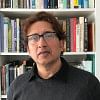
 For all latest news, follow The Daily Star's Google News channel.
For all latest news, follow The Daily Star's Google News channel. 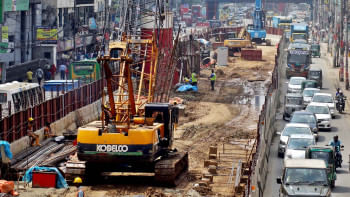
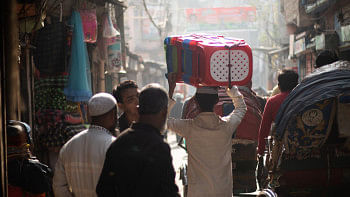





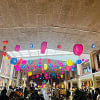
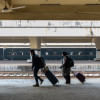

Comments